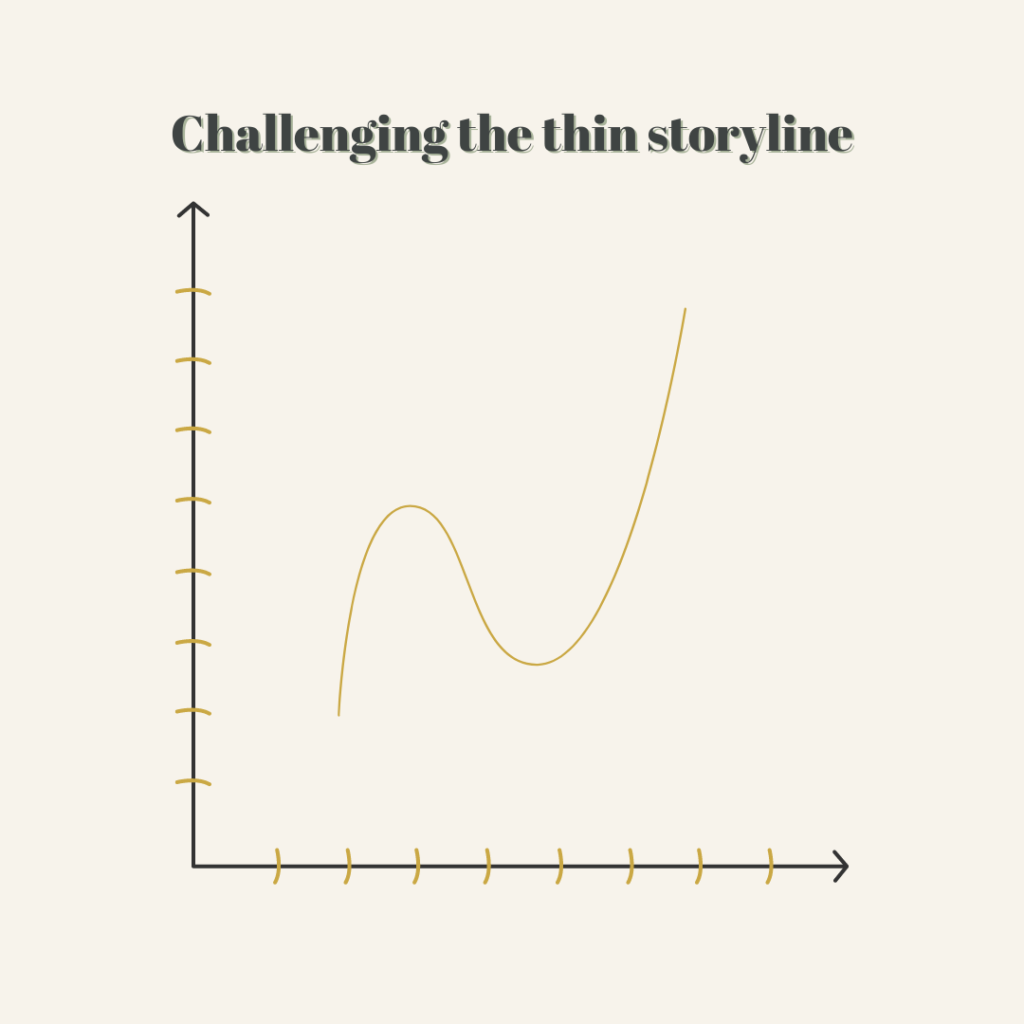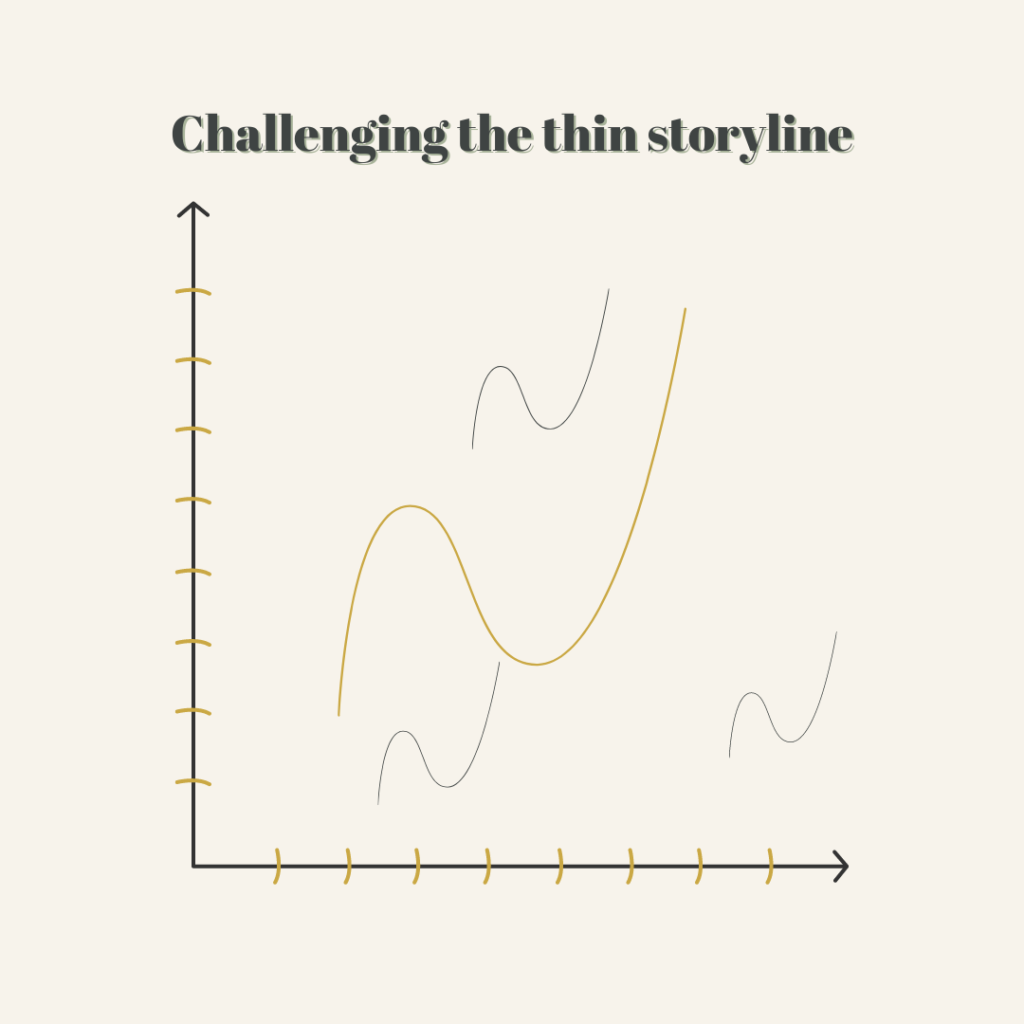When I was 11 years old, I moved to a new school in northwest Ohio that was colloquially referred to as The Academy.
Their motto was “Excellence is our tradition,” and it wasn’t just a feel good mantra, either. They meant it.
For most kids at The Academy, any grade below an A- induced the same catastrophe as an F (and these were the days before a 10-point grading scale existed, so a 93% on a test unleashed pure psychological doom).
Because I had come from a tiny, nearly off-the-map school in nowhere Ohio (and because standardized testing didn’t exist back then to hold schools accountable in any shape or form), my older sister and I were behind the 8-ball when it came to academics at The Academy.
We didn’t know what imposter syndrome was back then (was anyone talking about that in the 80s???). But let me tell you, it came flooding into our souls like a giant tsunami when we first moved into town, and for me, it all came to a head by 1992.
// Flashback – 1992 – sophomore year of high school //
I sat in my high school guidance counselor’s office and told her that I wanted to take AP European History.
Her eyes peered at me with doubt.
Her voice grew urgent as she tried to convince me to take regular history. “I’m just not sure you can do it,” she told me.
“I’m a solid B student,” I said. “I want this challenge.”
I can still remember everything about that AP classroom.
The stark white walls, the glaring halogen lights, the way the clock ticked (in spite of being covered over by paper because our teacher, Mr. S, didn’t want us getting distracted by time-space orientation). There must have only been six of us in that class, but I knew my place needed to be in the back.
Mr. S never looked me in the eye.
He never spoke much to me, either.
He didn’t want me in that classroom, and I felt it every time he walked past me.
All these decades later, I wonder if those feelings were real or imagined, but regardless of the answer, I developed a persona that would stick with me for the entire year: I was the oddball in the classroom, the ugly duckling who was wildly out of place.
At 15-years-old, I had plenty of fire in my belly, but I hadn’t yet learned how to push back against a false perception, hadn’t mastered the art of telling someone to bug off, so instead, I shut down, stopped studying, and fulfilled all false and ungodly prophecies by earning a solid C in the course.
// College – Freshman Year //
Two years later, I graduated high school and enrolled in a small, private liberal arts college.
Heart and brain on auto-pilot, I didn’t expect to be “the smart girl” in the classroom. Anything below a 3.8 GPA had been considered “below average” where I had come from, and my solid B high school average had been fairly earned. I never studied, only did the minimum homework assignments, and I often slept through English class (because it was the one class I could sleep through and still pull off an A).
I wasn’t necessarily looking for a clean slate in college, but it certainly found me.
Almost immediately, I was enamored with what learning could be.
We had conversations in class and I somehow managed to make meaningful contributions.
My history professor gave essay tests instead of rote memory multiple choice, and I aced them all.
My biology prof talked about the human body like it was a living, breathing thing instead of an ancient relic, and I loved her so much that I almost changed my major. (I still sometimes wish I had.)
The girls on my dorm floor stressed out night after night over studying and getting their homework done, but it all felt so easy for me.
In spite of the easy, none of it felt right.
School was supposed to be hard. I was supposed to be average.
The only explanation for all of it, I decided, was that I was living in the middle of some weird episode of The Twilight Zone. But four years later, I was walking across the college graduation stage with an honors degree in hand, and I couldn’t help but be a little secretly proud. One of my high school classmates was also in my college graduating class. He had sat through that AP History course with me, and as I heard my name announced – with honors – I imagined there was an invisible throughline from him to Mr. S.
Take that, Mr. S. Bug.Off.
That moment was the beginning of the great reframe in my life – because (to borrow a term from narrative therapy) the thin storyline I had allowed myself to be defined by for so long was beginning to thicken.
No longer did I feel the need to hide.
No longer did I feel like I needed to qualify my input.
No longer did I feel small or insignificant or average.
// The Thin Storyline //
In the practice of narrative therapy, a thin storyline is the therapist’s equivalent to the storyteller’s dominant story: It’s the piece of story we use to define every belief we hold about ourselves or our world.
So, if you’re a kid who grows up thinking you’re stupid, then your thin storyline works overtime to ensure that everything you touch (even as an adult) is colored with that label.
If you spent your life finding your worth in your athletic achievements, then your thin storyline may tell you that you’re nothing if you’re not achieving.
Or if your grandparent told you over and over again that you were a no-good nothing, then this refrain may become a thin storyline long after that grandparent has died.
In business (just as in life), we get trapped by our thin storyline all the time. Here’s how I’ve seen it play out in some of my clients’ lives:
You spent 12 years in corporate and now don’t know how to see yourself as anything BUT a corporate leader.
You inherited leadership of a family business but feel more like a son than a CEO.
You’ve lived a messy life pre-business, so when it comes to telling your story, you’re shaking in your boots because what happens if people find out who you WERE way back then?
The fears are valid, but they’re also a trap – because when you get stuck in the narrative of your thin storyline, you’re buying into the lie that you’re a one-dimensional character. And (just like I did in that high school AP history class), you surrender your power and your God-given right to create a deeper story.
So how do we get unstuck? The answer isn’t simple (or quick), but borrowing a tool from narrative therapy, we discover that one way to do this is by imagining the thin story of your life laid out on a graph (like the one below).

This thin line is the story you’ve used to justify your fear or fuel your insecurity. It’s the story you’ve used to propel your courage and push through hard. And it’s the story you’ve come back to again and again when you’re having all of those inside-head conversations about who you are and who you might become.
And while it’s super easy to believe that this thin storyline is all the truth we need, the real truth is that this thin storyline is only a PIECE of who we are – because we are all far more than just a single story – we are many stories moving in and through a single life.

When I introduce those additional storylines to my own narrative, I clearly see how I am so much more than that young girl who sat in the back of her history class, believing the lie that she was too dumb to keep up with the valedictorians.
I am the woman who graduated from college with honors, who earned a master’s, who created and raised four beautiful babies, who stood up to an impossible battle against industrialized agriculture, and who has an incredible gift for finding the story others don’t know how to tell.
And when I hold these storylines up against my thin storyline, I don’t just reframe my truth. I challenge it in order to make space to discover a deeper, more honest story that more holistically defines who I am and how I move through my world.
Take a moment to think about those other storylines in your own life, and once you’ve identified them, think about this: How do they support or challenge your thin storyline? And when you’re ready, let’s find a time to talk about how it all impacts your business.